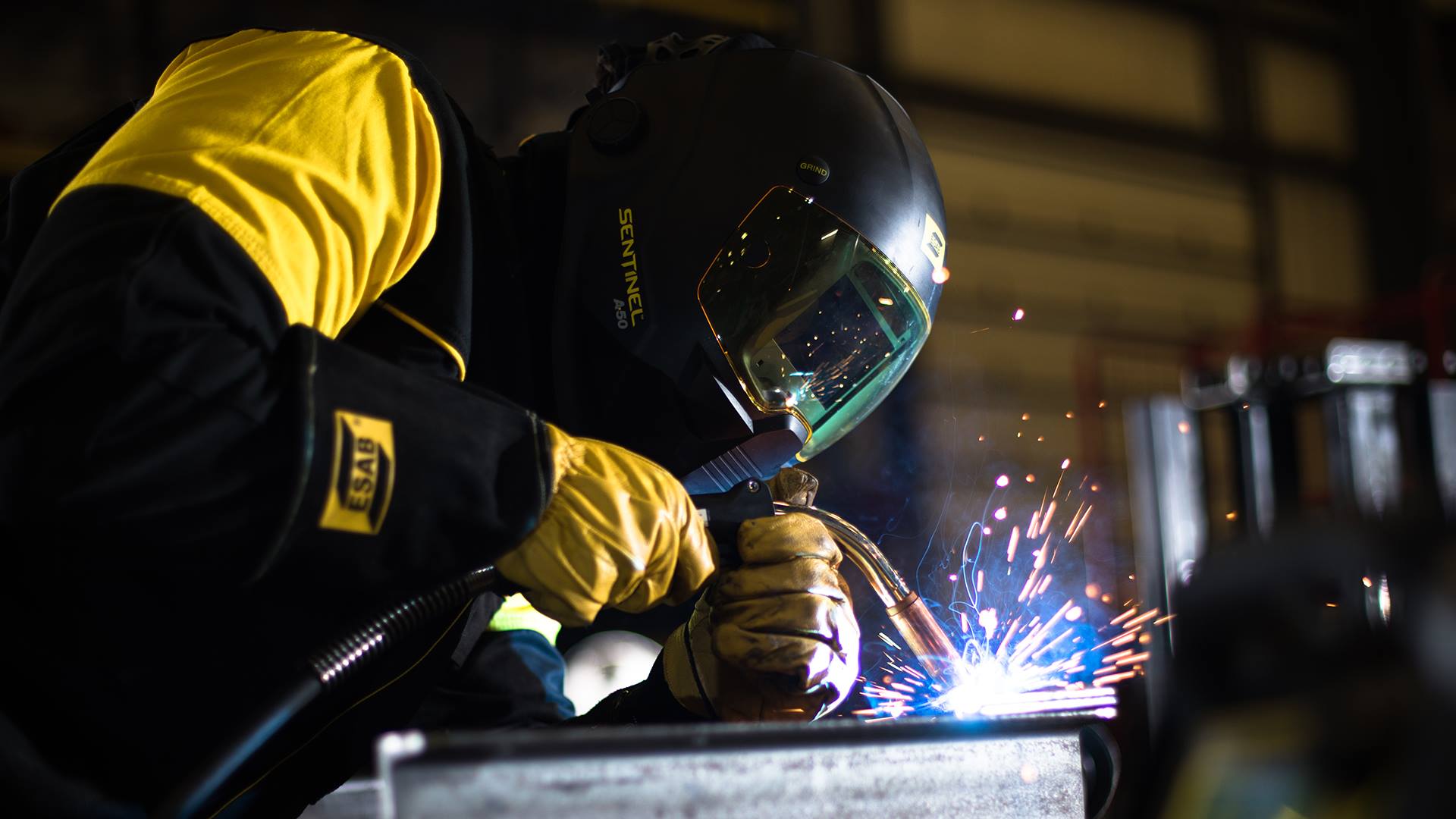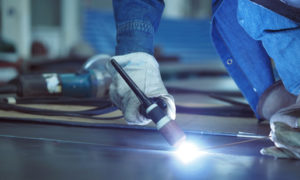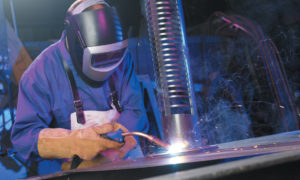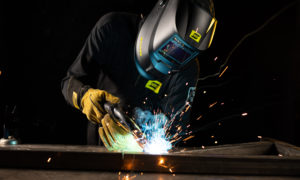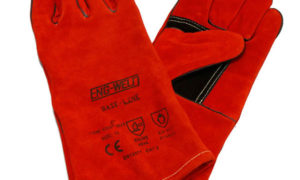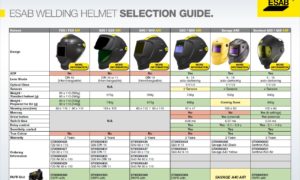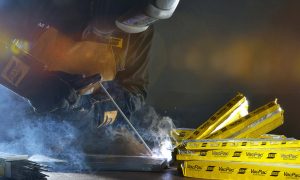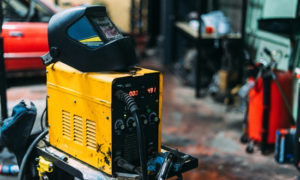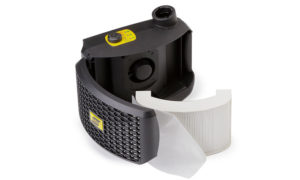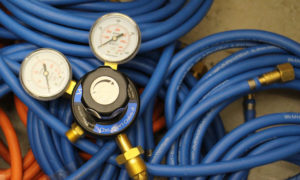Welding stainless steel is unique and different from welding other metals. It is crucial to understand stainless steel as a metal and the the different types of stainless steel out there. This article will look at the various important factors to consider when welding stainless steel with different welding processes.
What is Stainless Steel?
Stainless steel, also known as inox or Corrosion Resistant Steel, is a type of alloy. Stainless steel refers to a group of iron and carbon based alloys usually made up of at least 10.5% chromium. Chromium plays an important role as it helps protect the steel from corrosion and other environmental factors. The exact components of the alloys may vary depending on the use of the steel. Other elements such as Nickel, Carbon, Manganese, Molybdenum, Nitrogen, Sulfur, Copper, and Silicon, may be added to increase the corrosion resistance, enhance oxidation resistance, and to achieve other characteristics.
Stainless steel is widely used metal in both industrial and consumer markets, due to its versatility, corrosion resistance, high strength, and clean aesthetic appearance. You can find stainless steel in kitchen appliances, medical instruments, industrial equipment, construction, automotive parts and many other industries.
Types of Stainless Steel
There are different grades and types of stainless steel based on its composition, microstructure, and properties. Each type has its own specific characteristics that make them suitable for various applications.
Stainless steels are mostly grouped into 5 major groups; austenitic, ferritic, martensitic, duplex, and precipitation-hardening. Each has a different level of corrosion resistance, strength, temperature resistance, and cost.
Austenitic stainless steel is the most common one and includes the 200 and 300 series and their primary elements are chromium and nickel.
Ferritic stainless steel contains higher chromium but lower nickel compared to austenitic stainless steel. They are non-hardenable Fe-Cr alloys and the common ones found in this category are 405, 409, 430, 422, and 446.
Martensitic stainless steel has a similar composition to ferritin and austenitic but contains higher carbon and lower chromium elements. This makes it it harder and more brittle than austenitic or ferritic stainless steel. The common grades found in this category include 405, 409, 430, 422, and 446.
Duplex stainless steel has a microstructure that combines features of both austenitic and ferritic stainless steel but contains significant amounts of chromium and nickel, along with molybdenum. Duplex stainless steel offers high corrosion resistance compared to austenitic and ferritic. Common grades found in this category are 2205 and 2507.
Precipitation hardening stainless steel falls under the 600 series. They have the capability to be hardened by a solution and aging heat treatment due to the alloying additions such as aluminium.
Can you weld stainless steel?
Yes, you can weld stainless steel. It can be welded with various welding processes including MIG welding, TIG welding, and MMA/Stick welding. The right welding process will depend on the application and the desired results as each process yields a different outcome.
Welding stainless steel may be a bit more challenging than other metals such as mild steel, due to several reasons. You may find stainless steel complicated because there are so many types with each type having a different composition of elements that can alter their characteristics. Therefore, working with stainless steel requires good knowledge, experience, and specialised techniques and equipment.
Stainless steel can be easily contaminated and requires excessive care and any imperfections in the weld can be seen clearly on stainless steel. These are some of the reasons why stainless steel welding can be difficult for inexperienced welders. However, with the right knowledge and equipment welding stainless steel can become as natural as welding other metals.
Factors to consider when welding stainless steel
Here are some of the factors to take into consideration when welding stainless steel to achieve quality weld.
Type of stainless steel: Knowing the type of stainless steel should be the starting point. Different grades of stainless steel have varying compositions and each requires specific welding procedures. The choice of filler material (welding rod) will also depend on the type of stainless steel you are welding.
Cleanliness: It is essential to thoroughly clean the base metal before welding because stainless steel is prone to contamination which can result in inferior welds. Make sure to remove any dirt, oil, grease, and other surface impurities. You can use a stainless steel wire scratch brush and it should be used only on stainless steel.
Shielding gas: make sure you choose the right shielding gas or inert gas for the type of stainless steel being worked on to protect the weld area from atmospheric contamination and prevent oxidation.
Prevent warping, distortion, and residual stresses: by using welding techniques like pre-heating, controlling heat input, and post-weld heat treatment. A popular technique to prevent warping and cracking involves clamping a piece of brass or copper behind your welding seam which helps absorb the heat and keep your stainless steel cool.
Cutting stainless steel: if you need to cut your stainless steel workpiece, it is recommended you use an arc plasma cutter. Stainless steel can not be flame cut with a torch.
Welding process: choose the appropriate welding process based on the type of stainless steel, joint design, required welding length and thickness. Common welding methods include TIG, MIG, and MMA/Stick welding.
Filler Metals for Welding Stainless Steel
Appropriate filler metal selection is crucial for welding stainless steel. It is recommended that the filler material matches with base material according to its chemical and mechanical properties. The more information you know about the application and the characteristics of the base metal can help you in making the right choice for the filler metal.
It may not always be possible to match base material due to various reasons such as costs or service condition requirements. When joining two different grades of stainless steel, it might be necessary to use a filler material that matches one of the base metals and is compatible with the other to balance the properties of the welded joint.
In some cases you may have to choose a filler material with specific properties such as higher strength or increased corrosion resistance to meet the requirements of the application. Cost may also be a factor when choosing the filler metal. Sometimes less expensive filler metal can be used as long as it still provides adequate properties for the application.
Regardless of which welding process you use, welding stainless steel like any other welding application requires careful selection of filler metals, especially when welding dissimilar metals. If you are unsure about dissimilar welding, always consult a welding equipment distributor or the filler metal manufacturer for appropriate filler metal recommendations.
MIG Welding Stainless Steel
You can weld stainless steel with the MIG welding process. MIG (Metal Inert Gas) welding, also known as Gas Metal Arc Welding (GMAW), is a type of welding process in which a continuous solid wire electrode is heated and fed through a welding torch into the weld pool. The arc melts the two metals together and forms a joint. One advantage of MIG welding process over others is that you can use pulsed current supply which allows you to weld in hard to reach areas.
Generally, MIG welding is the preferred option for applications involving long welds requiring speed and efficiency. TIG welding is preferred for applications requiring precision for clean controlled welds and aesthetics. If the application involves long joints in relatively thick material or a large number of parts then MIG welding is the right choice as it offers efficiency and cost effective welding.
When choosing to MIG weld stainless steel there are certain factors that need to be taken into consideration.
Welding machine: You can weld stainless steel with a MIG welding machine and they typically have an inbuilt wire feeder to continuously feed filler wire through the welding torch. You won’t have to constantly change electrodes or filler rods as you would with TIG welding. Make sure the welding machine has sufficient power output to handle the thickness of stainless steel you will be working on.
The settings such as voltage and amperage on your welding machine will vary depending on the application for example, wire diameter, shielding gas, material thickness, weld size etc. It may be best to start with the settings recommended by the mig welding wire manufacturer.
MIG Torch: MIG Welding machines usually come with a MIG torch. Make sure the components of the torch are designed to work with stainless steel. For example, for stainless steel welding it is important to use a liner made of a non-reactive material such as Nylon or Teflon, to prevent contamination of the wire and to ensure smooth wire feed.
It is recommended that you use a separate set of drive rolls and liners for stainless steel to prevent cross contamination. If you don’t have separate ones then you must clean them with a solvent that doesn’t leave any residue before using them for welding stainless steel.
Filler wire: use appropriate mig welding wire with the right diameter for your application to match the grade of stainless steel being welding. Common mig wires include ER308, ER309, and ER316.
Shielding Gas: you must choose the right shielding for stainless steel to prevent contamination. A popular choice for mig welding stainless steel is a mix of Helium, Argon, and Carbon Dioxide. The tri-mix provides the optimal weldability and weld quality. Use the gas selector tool or download the gas selector guide to choose the right gas for your welding application.
Welding parameters: use the right settings for welding stainless steel on your MIG welding machine, including voltage, wire feed speed, and travel speed to achieve the desired weld quality and penetration.
Welding technique: should be based on the thickness of the stainless steel and the specific joint design. Use the push technique which allows you to see more clearly what you are doing. Use the pull technique if the application requires deeper penetration.
TIG Welding Stainless Steel
You can use the TIG (Tungsten Inert Gas) welding process to weld all stainless steel alloys that are considered weldable. TIG, also known as Gas Tungsten Arc Welding (GTAW), is a type of welding process that uses a non-consumable tungsten electrode that delivers the current to the welding arc. The tungsten and the weld puddle are protected and cooled with an inert gas. Welding stainless steel with the TIG process may be the preferred method if the application requires precision and high quality weld. The TIG welding process may be slow compared to MIG welding but it offers better control.
The TIG welding process requires more attention with good technique and steady hands which makes it more challenging than other welding processes. You have to control the amperage, the filler metal, travel torch angle and arc length. The benefit in return is that it allows you more control over the output allowing you to make quality welds.
Factors to consider when TIG welding stainless steel:
Filler metal: make sure the TIG welding wire material is compatible with the type of stainless steel being welded. The TIG wires come in different diameters and the right choice will depend on the thickness of the base metal.
Common stainless steel filler materials include ER308, ER309, and ER316, depending on the specific grade of stainless steel being welded. ER308 tig welding wires can be used to weld 304 stainless steel as well as most 200 and 300 series of stainless steel. Application where the base metal properties need to be maintained and protected then ER316 is preferred choice. ER309 can be used to join stainless steel to mild steel.
Electrodes: use thoriated, ceriated, or lanthanated tungsten electrodes for stainless steel welding because they offer more stable arc and can be used with higher currents than pure tungsten electrodes.
Electrodes usually have one side coloured and the colour is there to help you identify the electrode. The non-coloured side of the electrode will need to be grinded before being used.
TIG welding machine: make sure you have the right settings on your TIG welding machine for stainless steel. Settings including current amperage and gas flow rate will depend on the thickness of the stainless steel.
You can pair a TIG foot pedal with your TIG welding machine and control the current with your foot as your welding.
TIG Torch: a TIG welding machine usually comes with a TIG torch. The TIG torch will include a gas diffuser and collet that holds the electrode. You may want to buy a gas lens kit for your TIG torch which allows a more stable and directed gas flow making it easier to control the arc and help achieve higher quality welds.
Shielding gas: used for TIG welding stainless steel is usually pure argon as you can use lower flow rates allowing more stable arc and the arc voltage is somewhat less than with helium. The lower voltage is ideal for welding thin sheets and preventing burn through. Helium or mixture or mixture of argon and helium are used for welding thick stainless steel.
Technique: it is recommended that the torch is held at 10-15 degree angle from the workpiece. Start the welding process by striking the tungsten against the metal and then quickly retract to establish the arc. You must maintain a consistent arc length and steady speed to achieve smooth even beads.
Distortion: in TIG welding the heat you put into the base metal is manually controlled by you
MMA Welding Stainless Steel
Stainless steel can be welded with the MMA or stick welding welding process. MMA (Manual Metal Arc) welding, also known as Shielded Metal Arc Welding (SMAW), is a type of welding process where an electric arc is generated between a consumable electrode and the workpiece. MMA welding is easier than MIG and TIG welding and requires less equipment.
For MMA welding stainless steel you will need a MMA/Arc welding machine which usually comes with an electrode holder. Make sure you have the right settings such as the amperage and polarity on your mma welding machine for stainless steel. For most stainless steel, DC-positive polarity is used as it offers more focused heat at the arc and deeper penetration into thicker material. The right settings will depend on the chosen electrode and the thickness of stainless steel being welded.
The other factor to consider will be the welding electrode. For MMA welding stainless steel you must choose the right welding electrode that matches the grade of the stainless steel being welded. Electrode holder will hold the welding electrode in place and allow the welding current to flow through it.
MMA welding stainless steel process will involve striking an arc with your electrode holder and the workpiece. Once the arc has been established, then move the electrode steadily along the joint line while simultaneously pressing down on the electrode holder. Make sure you maintain a consistent arc length during welding, usually around 2-4mm. It is also important to control the welding speed as stainless steel has a lower thermal conductivity compared to carbon steel so it requires slower welding speeds to avoid overheating and distortion.
Unlike MIG and TIG welding, MMA welding stainless steel does not require an external shielding gas. In MMA welding the flux coating on the electrode generates a protective gas shield when it melts during the welding process. This shield covers the weld pool, protecting it from the surrounding atmosphere, preventing oxidation and contamination.
Safety Measures for Welding Stainless Steel
You must wear appropriate personal protective equipment (PPE) when welding in general. Safety precautions are even more important when welding stainless steel due to the toxic fumes generated during the welding process. Some filler metals generate higher levels of welding fume than others. Toxic fumes containing hazardous contaminants can cause serious health issues.
You should use a welding fume extraction system which is designed to capture and remove welding fumes at source. An air fed welding helmet equipped with a powered air purifying respirator (PAPR) unit can offer another layer of protection to protect you from welding fumes.
Welding stainless steel involves extremely high temperatures, so you must wear appropriate welding gloves, welding jacket and welding trousers to protect yourself.
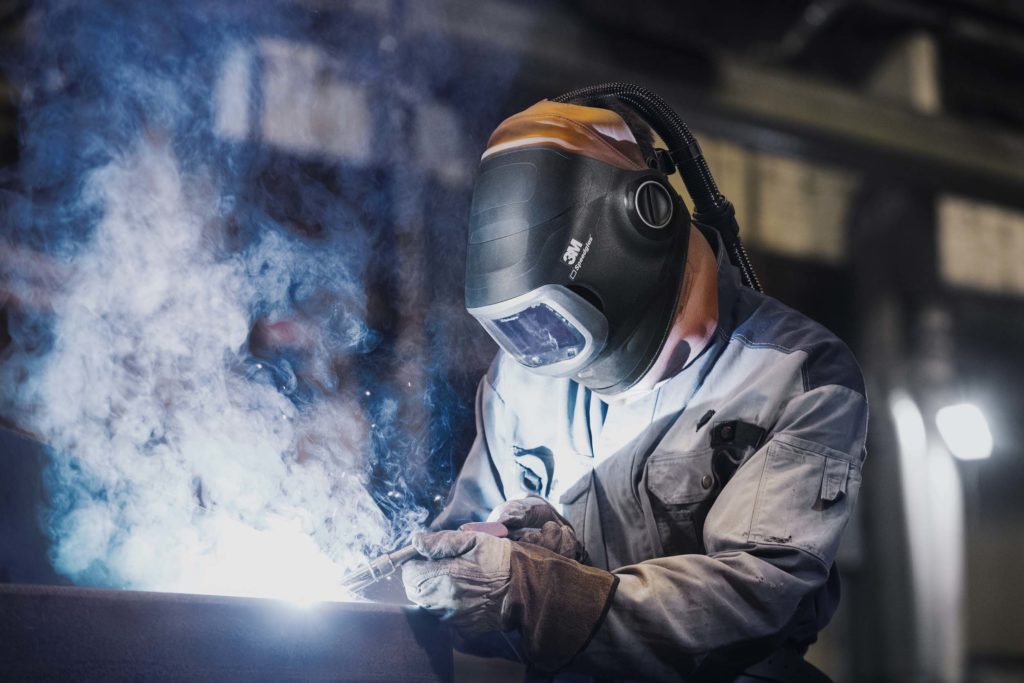
If you want to learn about welding aluminium – click here.
If you have any questions or queries regarding welding stainless steel then please contact us and speak to one of our experts.

